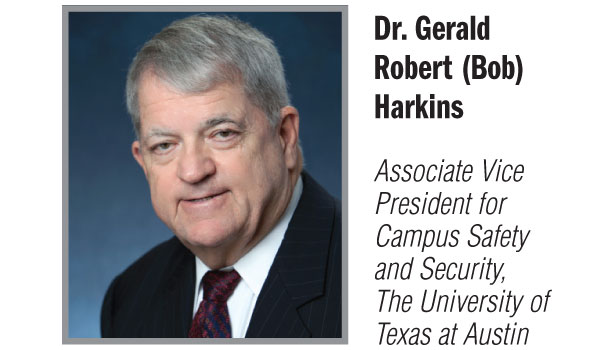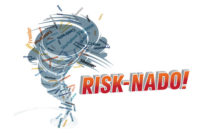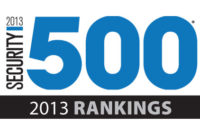“When I had the opportunity to move from parking and transportation at the University to leading the strategic security and safety effort on campus, we made a very strategic and important decision to build the structure to be broader than law enforcement. We incorporated all aspects of campus safety and security,” says Dr. Bob Harkins of the University of Texas, Austin. “That decision speaks volumes about the leadership at the University. It was a decision to make this department an enabler for the business of protecting and educating students, faculty and staff. That was a very strategic decision encompassing law enforcement, campus safety and security, business continuity and risk management as core missions.”
A university campus is the perfect environment for Bob, who focuses on continuous learning and improvement. A U.S. Army veteran, he retired in 1993 and joined the University of Pittsburgh as the parking enforcement leader. After earning his doctorate there in 1998, he moved to Austin and took a similar role at Texas. In 2005, a reorganization to create a comprehensive approach to campus security and safety was initiated, and he earned the top job.
“We created a process to communicate across organizational lines for the purpose of planning, coordinating and preparing for emergency procedures,” he says. “Since 2005, several incidents have demonstrated the value of planning, preparation and communications. Incident management results have been positive and recognized including external audits that have demonstrated compliance with state and federal regulations. What I most enjoy about my role is the opportunity to work with people across the campus and get systems in place to protect people and the institution.”
Higher education is a unique sector due to a regular 25 percent annual turnover. With 53,000 students, 17,000 faculty and staff and more than 3,000 daily visitors to 167 buildings, the campus is open and accessible to the public and a wide variety of related threats. “The campus is a small city, filled with all the stress of any city,” he says. “The planning is never done. But the commitment dating back to 2005 to focus on safety and security and create a continuous effort to improve our preparation and planning has paid significant dividends.”
“The leadership of any enterprise, especially a large state university, is challenged to keep their eye on the security or emergency ‘ball’ and therefore must provide the resources and structure to allow for it to take place on a continuous basis,” he explains. “Our president encourages the development of plans, testing communication systems and stresses training to prepare and respond to events.”
Among the challenges is communication with all the various stakeholders for emergencies from fire to hazards to weather alerts. “Each year, 25 percent of our population turns over, and we start over to get buy-in, keep their attention and have them take appropriate action for their safety. There is not one methodology for communicating with everyone we need to reach. The messaging from calling, emailing, texting or tweeting to stakeholders is available, but the most effective practice is not known. Also, the message itself demands consideration. Messages are prepared in advance for specific events to better manage communications. Alerting 70,000 people to get into 167 buildings is challenging.” As a leader, Bob is always advancing preparedness and communications. In 2007 the university inaugurated an outdoor warning system for weather.
As a platoon leader in the 101st Airborne Division in Vietnam, Bob learned quickly about leadership. “I had lots of authority, but when the shooting started it didn’t mean a lot. As a rifle company commander on Hamburger Hill, our orders were to go up the hill and back to draw out the enemy. The soldiers knew they would be shot and did not want to go. As the leader I had to talk to everyone about our orders, explain I didn’t want to go either, but that we were going and would work together to stay alive and accomplish the task.” Bob and two others were shot and evacuated on a medical helicopter after the mission.
“I learned leadership then and still do from strong leaders in my life,” he says. “Division Commander Dick Seitz was a great leader and mentor who made things look easy, was always positive and allowed others to make decisions. Dr. Pat Clubb, the vice president of university operations, has been a tremendous influence. She enables us to focus on education and connect with the other departments to achieve university goals.”
As a decorated war veteran who also served in Desert Storm and Desert Shield, he is proud of his two sons who are both infantry lieutenant colonels in the Army. Securitythanks him for his service.
Security Scorecard
- Annual Revenue:$24 Billion
- Security Budget: $17 Million
Critical Issues
- Communications
- Health issues
- Response to bomb threats
Security Mission
- Corporate
- Enterprise Resilience
- Enterprise Risk Management
- Fire Protection, Environmental Health and Safety
- Investigations
- Physical/Asset Protection (Not for Resale)
- Workforce Protection (Students and Staff)


